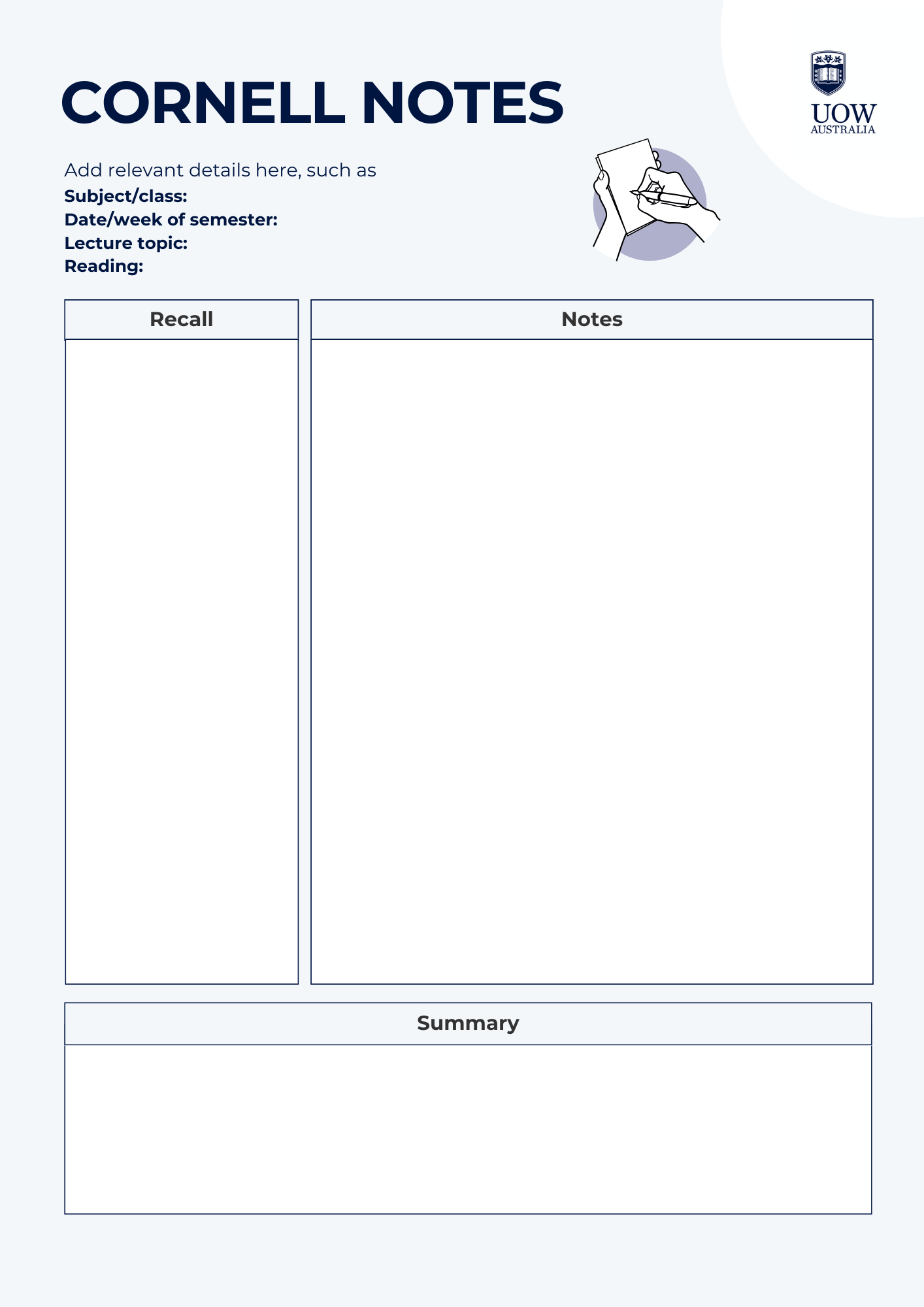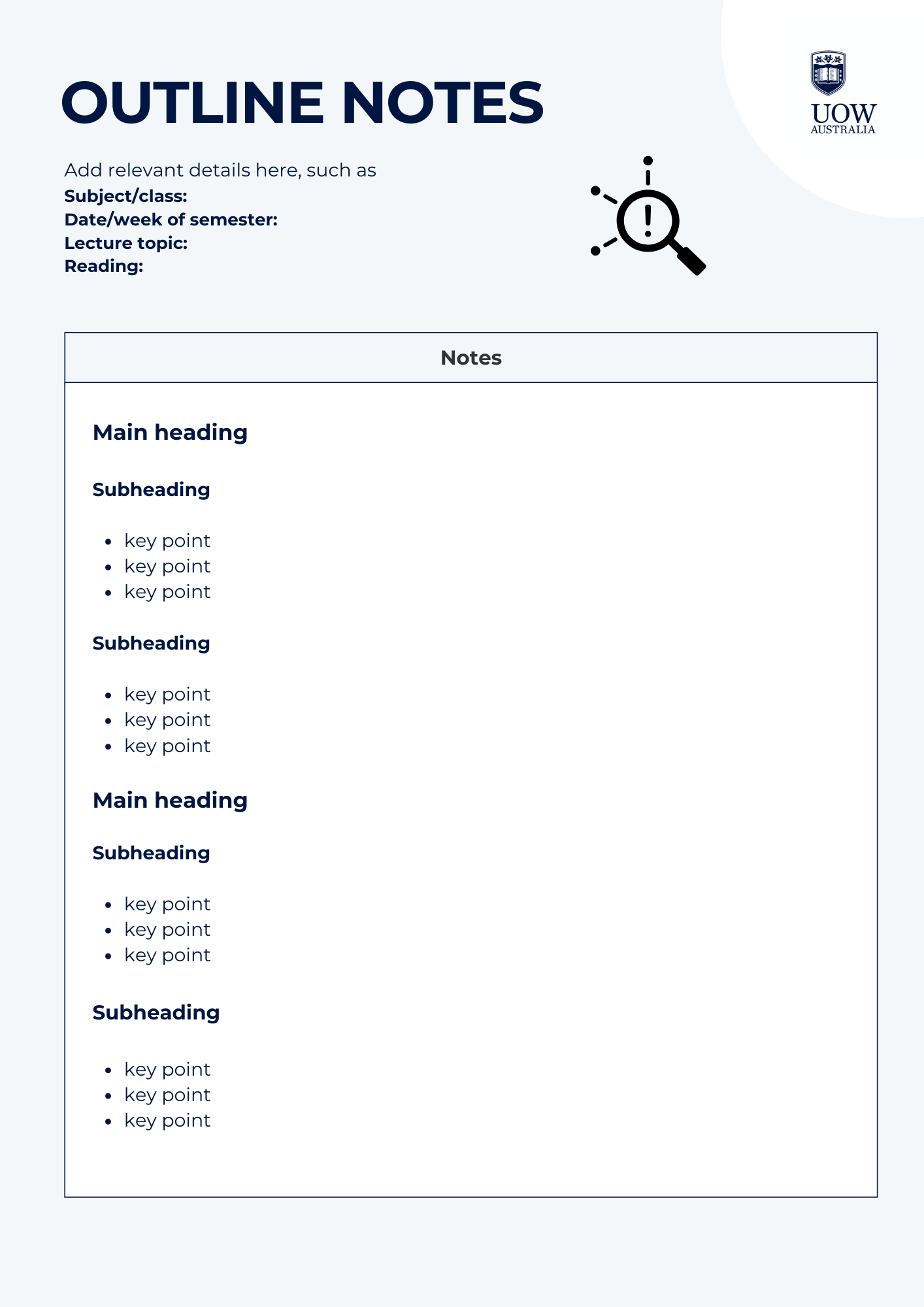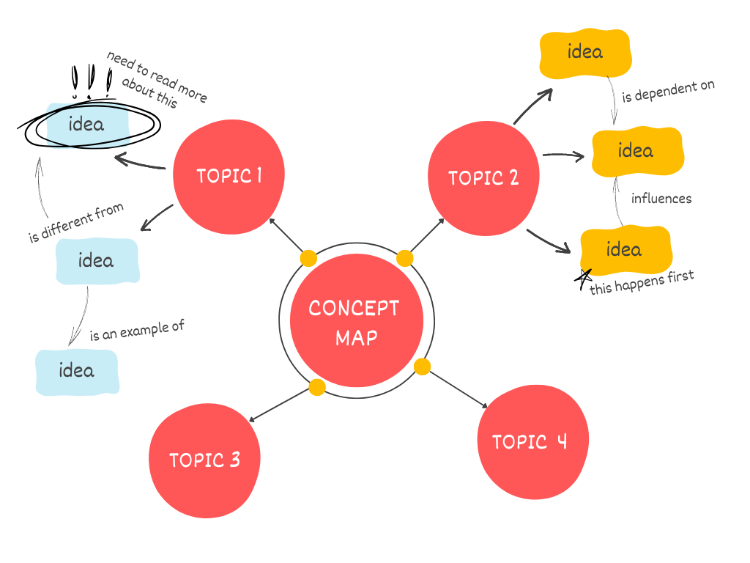Taking notes
Developing strong note-taking skills is important at university. Note taking helps you understand and retain information better, making studying and exam preparation much easier.
Top reasons to take notes
- Identifying key information: Notes help you pinpoint essential details from lectures and readings.
- Enhancing understanding and memory: Writing notes aids in better comprehension and retention of information.
- Maintaining focus: Note-taking keeps you engaged and attentive.
- Efficient review: Well-organised notes allow for quick and easy review before exams or assignments, making it simple to refresh your memory on key concepts.
- Developing skills: The process of writing notes helps you practice summarising, paraphrasing, analysing, prioritising information, and thinking critically about what you are learning.
- Avoiding plagiarism: Keeping track of your sources ensures you have a record of where your information, facts, and ideas originated, helping you avoid plagiarism.



